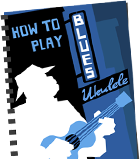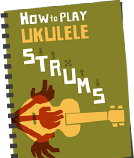I’m a big enough man to admit this. I was wrong and Noel Edmonds was right. Last week I cosmically ordered a Koaloha Sceptre. This week my dealer of choice put up a Sceptre for the first time. I shall never doubt the Edmonds again. He is my new Jesus.
Summer NAMM 2010 was last week. There doesn’t seem to be as much uke buzz coming out of it as the winter event. The one thing that caught my eye was the Kala Roundabout Ukulele Amp. I’ll take one in hot pink, The Cosmos. Ukeeku has a good write up of the event.
A few DeVine Ukuleles up this week from guitar and uke maker Eric DeVine. He has an impressive client list including Jack Johnson, Pearl Jam’s Eddie Vedder and Mike McCready, and Kimo Hussey.







